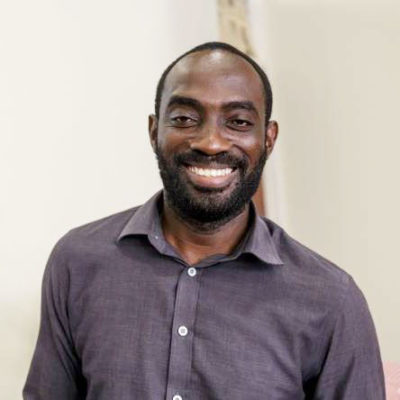
Zero is possible!
At the International Leprosy Symposium at the Vatican in January, Dr Benedict Quao shared his experiences on participating in the implementation of the Global Partnership for Zero Leprosy (GPZL) country model in Ghana, Uganda and Nigeria. Dr Quao is National Leprosy Programme Manager in Ghana and a member of the GPZL Leadership Team, and is thus exceptionally well-placed to give an informed overview.
Impact of the GPZL Country Model in Ghana
New leprosy case numbers in Ghana have stabilised at 260-280 cases per year since 2017 following a decline from more than 1,000 cases per year at the beginning of this century. The proportion of new cases with Grade-2 disability has crept up to around 15% in recent years. These factors prompted the Ministry of Health in Ghana to invite GPZL to begin to implement its country model. A country review in 2020 led to the adoption of a zero leprosy roadmap, followed by development of a detailed action plan in 2021.
The action plan involved participation by fifteen separate Ghanaian and international partner agencies, which committed to provide the technical, financial and political support needed to reach its goals. The action plan was built around the four pillars of the WHO Global Leprosy Strategy 2021-2030, with specific and quantifiable deliverables within each pillar.
Positive impacts of the country model, seen especially since the adoption of the action plan, include:
- Increased visibility of leprosy within and outside the health system. Examples include facilitation of approvals through enhanced engagement of senior leadership of services; provision of extra technical services to the Programme; the engagement of top-level political leaders; and the inclusion of leprosy in recent health services economic modelling done with support of WHO and UNDP.
- Bringing together of existing partners, who were previously not well aligned, around a common focus.
- Increased involvement by District Assemblies Common Fund, resulting (for example) in investment in a leprosy research facility and much-needed renovations at facilities including the national leprosy referral hospital.
- Increased collaboration with other NTDs.
- Implementation of new interventions including geo-localisation, SDR-PEP pilots, and a revamped morbidity management and disability prevention (MMDP) programme.
Observations on the GPZL Country Model in Uganda and Nigeria
Uganda was the first GPZL partner country to use some of the revised country model tools and processes developed in 2021, and the full set of tools was finally available for the Nigeria review. Experts for both countries were selected for involvement in the country review based on leprosy expertise, prior evaluation and local experience, and ability to travel with no restrictions due to the ongoing pandemic. There was remote support from the GPZL secretariat. In both countries, the leprosy programme is combined with TB, and a relevant feature was that the national TB/Leprosy Strategic Plan had expired or was shortly due to do so. Additionally, in Nigeria, the combination of Buruli ulcer into the leprosy programme’s scope allowed the external experts to include Buruli ulcer in the review and subsequent planning activities. The NTD programmes in both countries are separate from leprosy but were represented during stakeholder meetings. In Uganda, action planning happened well after the roadmap development, involving a separate meeting of stakeholders, whereas in Nigeria the two processes were combined.
Thoughts and conclusions
Partner countries have generally received the GPZL country model well. The major plus has been its ability to bring partners in-country around a common focus. It however takes great effort to engage broad sectoral stakeholders around the table, and ongoing work is almost always necessary after the stakeholder meeting. Critical success factors include:
- Support by various technical experts as consultants.
- Well-designed preparatory phases, which strengthen the entire review process.
- Availability of prior validated data.
- Appointment and engagement of a core group of stakeholders which should subsequently transition into a National Partnership for Zero Leprosy.
In terms of opportunities for improvement, Dr Quao proposed:
- Greater clarity on what happens after the action plan is adopted (for example, monitoring and evaluation processes, and technical support).
- More active exploration of opportunities for integration with other skin NTDs, along with evaluation of the challenges with some integration models such as between TB and leprosy.
- Addressing imbalances in domestic resource mobilisation), noting that Governments normally fund infrastructure and HR costs, but other activities are still largely partner-driven.
- Closer attention to the involvement of organisations of persons affected by leprosy.